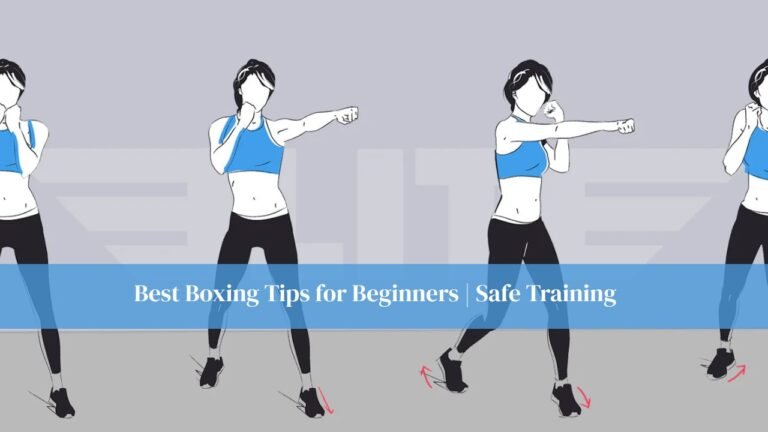Boxing is a demanding sport that requires a unique combination of strength, speed, agility, and endurance. To excel in the ring, boxers need to train rigorously, and their training should be a holistic approach that covers various aspects of fitness. One such approach that has gained popularity in recent years is calisthenics. In this article, we’ll explore the benefits of calisthenics for boxing and why incorporating bodyweight exercises into a boxer’s training regimen can lead to better results.
The Basics of Calisthenics
Before we dive into the relationship between calisthenics and boxing, it’s essential to understand what calisthenics are. Calisthenics are bodyweight exercises that focus on using your weight for resistance. These exercises often involve movements like push-ups, pull-ups, squats, and planks. They are designed to improve strength, flexibility, and overall fitness without the need for equipment or weights.
Benefits of Calisthenics for Boxers

Let’s delve into more detail regarding the benefits of calisthenics for boxers:
Enhanced Physical Power
Calisthenics serves as a fundamental pillar for building a boxer’s physical power. These bodyweight exercises engage a wide array of muscle groups, including the chest, shoulders, back, legs, and core. This holistic approach to strength training ensures that boxers develop functional strength, which is essential for delivering powerful punches and maintaining the stamina required for extended bouts.Heightened Agility and Precision
Agility and precision are paramount in the world of boxing. Calisthenics routines incorporate various dynamic movements that mimic the unpredictable nature of a boxing match. This exposure to diverse movements not only enhances a boxer’s physical agility but also sharpens their precision. Boxers who regularly practice calisthenics find themselves better equipped to move swiftly, evade their opponents’ punches, and strike with precision in the heat of battle.Fortified Core Stability
A strong core is the anchor of a boxer’s stability and balance. Calisthenics exercises like planks and leg raises target the core muscles, including the abdominal and lower back muscles. Developing a solid core is crucial in boxing, as it aids in maintaining the correct posture, absorbing powerful punches, and generating force for counterattacks. It’s the secret to staying grounded and in control during a match.Enhanced Cardiovascular Endurance
Boxing is a high-intensity sport that demands peak cardiovascular endurance. Calisthenics workouts, when performed at an increased pace and intensity, act as an effective means to elevate a boxer’s cardiovascular fitness. These exercises not only increase heart rate but also improve lung capacity, ensuring that boxers can endure the demanding nature of boxing matches without succumbing to fatigue.Injury Prevention and Resilience
Calisthenics places a significant emphasis on functional movements that enhance joint mobility and overall flexibility. This multifaceted approach reduces the risk of injuries during boxing training and matches. As boxers often perform dynamic and rapid movements, the improved flexibility and joint mobility from calisthenics serve as a protective shield against potential injuries, making their journey in the sport smoother and less prone to setbacks.
Considerations When Combining Calisthenics with Boxing

Let’s elaborate on the considerations when combining calisthenics with boxing:
Overtraining Risks
While calisthenics offers numerous benefits to boxers, overtraining is a legitimate concern that must be addressed. Boxers are known for their rigorous training schedules, which include both boxing-specific workouts and supplementary exercises like calisthenics. To prevent burnout and the risk of injury, boxers must strike a balance between these training modalities. Overtraining can lead to fatigue, decreased performance, and even a higher risk of injuries. Therefore, it’s essential to design a training plan that carefully integrates calisthenics without overwhelming the boxer’s system.Skill-Specific Training
Boxers must always bear in mind that their primary focus should be on skill-specific training. The essence of boxing lies in mastering the art of punches, footwork, defense, and strategy. While calisthenics can be a valuable addition to their regimen, they should never replace the core components of boxing training. The art of boxing involves a profound understanding of technique, timing, and strategy. Boxers should use calisthenics as a supportive tool to enhance their physical attributes while ensuring that their boxing skills remain the core focus of their training.Personalized Workouts
Boxers are individuals with unique strengths, weaknesses, and training needs. Therefore, calisthenics routines should be personalized to address these specific aspects and maximize their benefits. Not all boxers will have the same requirements, as some may need to focus more on strength, while others may prioritize agility or endurance. Personalized calisthenics workouts take into account a boxer’s current skill level, physical condition, and long-term goals. Tailoring these routines ensures that the boxer gains the most from their supplemental training, while also preventing imbalances or unnecessary strain on particular muscle groups.
Sample Calisthenics Routine for Boxers
Incorporate the following calisthenics exercises to enhance your boxing training:
Push-Ups: Upper Body Power
Sets: 3
Repetitions: 15-20 rep
Benefits: Develops upper body strength, especially in the chest, shoulders, and triceps. Enhances punching power and overall upper body endurance.
Pull-Ups: Building Back Strength
Sets: 3
Repetitions: 8-10 reps
Benefits: Strengthens your back, biceps, and forearms. Improves your ability to control and maneuver your body during boxing, making it easier to evade opponents.
Planks: Core Stability
Sets: 3
Duration: 30-60 seconds
Benefits: Focuses on core strength and stability. A strong core is essential for maintaining balance, agility, and generating power in punches.
Squats: Lower Body Foundation
Sets: 3
Repetitions: 15-20 reps
Benefits: Works on leg strength and explosiveness. Strong legs are vital for footwork, mobility, and generating power in punches and movements.
Burpees: Full-Body Endurance
Sets: 3
Repetitions: 10-12 reps
Benefits: A complete full-body exercise that enhances cardiovascular endurance and muscle stamina. It mimics the intensity of a boxing match and is excellent for conditioning.
Common Misconceptions about Calisthenics for Boxing
When it comes to incorporating calisthenics into boxing training, it’s important to dispel some common misconceptions:
Bulking Up: A Myth
One prevalent misconception is that calisthenics will inevitably lead to excessive muscle gain and a bulkier physique. In reality, calisthenics can be tailored to achieve the desired results. By adjusting the intensity and volume of exercises, boxers can maintain a lean and functional physique, ideal for their sport.Ineffectiveness: A Misunderstanding
Another myth is that calisthenics are less effective than other forms of training. When performed correctly, calisthenics can be highly effective in improving strength, endurance, and flexibility. The key is to design a well-structured routine that aligns with your boxing goals.Substitute for Boxing: A Misguided Notion
Calisthenics should never be viewed as a substitute for boxing training. Rather, they should be seen as a complement. While calisthenics enhance overall fitness, boxing-specific training remains essential for mastering the techniques and skills required in the ring. Combining both ensures a well-rounded approach to boxing preparation.
Calisthenics vs. Weight Training
Both calisthenics and weight training have their unique advantages. In the context of boxing, here’s a brief comparison:
Calisthenics
- Focuses on using your body weight for resistance.
- Enhances body control, agility, and flexibility.
- Tailorable for achieving functional strength without excessive muscle gain.
- Ideal for boxers looking to develop lean, agile, and well-balanced physiques.
Weight Training
- Involves lifting external weights or using resistance machines.
- Can lead to greater muscle hypertrophy if not monitored.
- Effective for building raw power and strength.
- Suitable for boxers seeking to increase punching power.
Related Post: Smelling Salts in Boxing The Ban Explained
Conclusion
Incorporating calisthenics into a boxer’s training regimen can be highly beneficial. It improves strength, endurance, body control, and mental discipline. However, it’s essential to strike a balance between calisthenics and boxing-specific training, ensuring that they complement each other. With dedication and proper guidance, calisthenics can enhance a boxer’s performance in the ring.
FAQs
Are calisthenics suitable for beginners in boxing?
Yes, calisthenics can benefit boxers at all levels, including beginners.How often should boxers incorporate calisthenics into their training?
The frequency of calisthenics training should be tailored to individual needs but should complement boxing workouts without causing overtraining.What are some recommended calisthenics exercises for boxers?
Recommended exercises include push-ups, pull-ups, squats, planks, and burpees.
Related Post:




